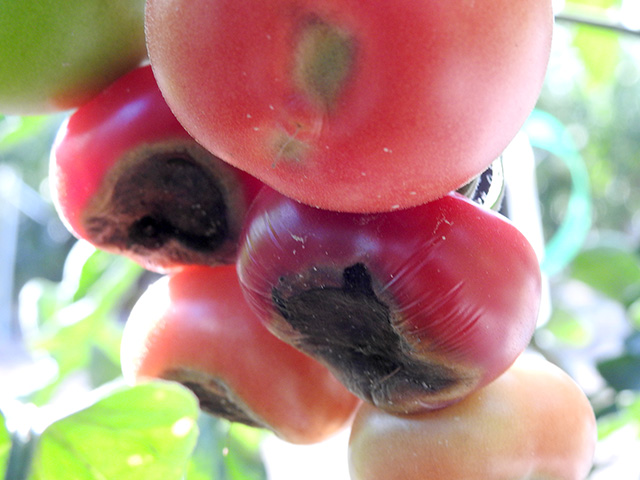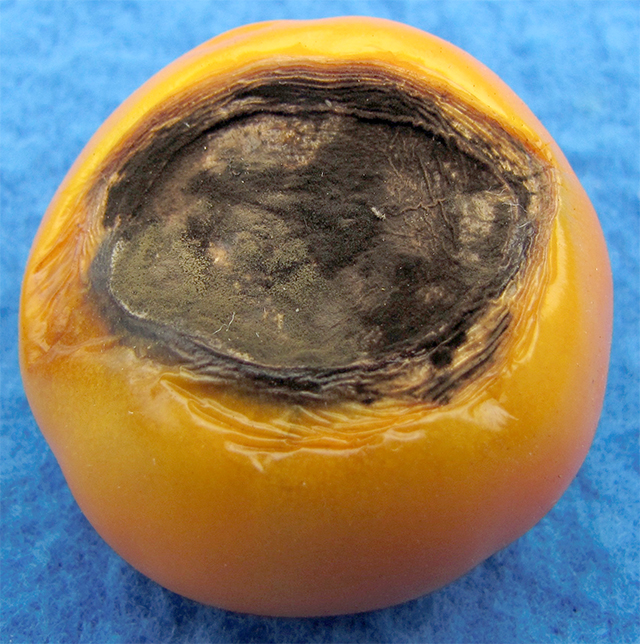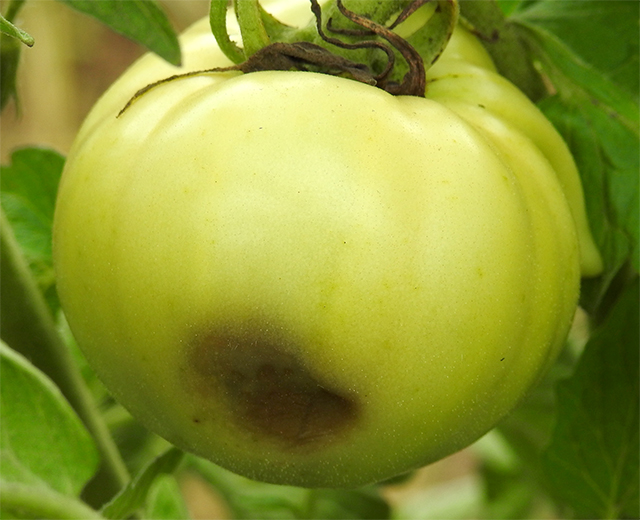When the amount of calcium being moved into fruit is insufficient to support growth of the fruit, tissue typically at the blossom end turns brown and then black, and becomes sunken and leathery. Varieties differ in susceptibility. Roma (plum) types tend to be most susceptible. These symptoms can be mistaken for late blight, especially when the symptom is on the side of fruit.
The deficiency of calcium is almost always due to the plant not being able to take up enough water from soil to move calcium to the fruit rather than there being a deficit of calcium in soil. Usually this is because the plants are not receiving enough water during very dry weather and/or when they are growing quickly. Sometimes it is because the soil is too wet or there has been a long period of high humidity, which both can interfere with water up take, or because soil has been fluctuating a lot between very dry and wet. Less common reasons for BER development include root rot, disease occurring in vascular tissue affecting water movement (e.g. Verticillium wilt), and excess of other nutrients (e.g. ammonium, potassium or magnesium). BER developing on green fruit often causes the fruit to ripen prematurely.
Some Heirloom tomatoes tend to have large blossom scars that could be confused for blossom end rot.
Fruit ripening out of sequence in a cluster can be an indication of blossom end rot.
Sometimes saprophytic fungi will grow on this dead tissue (below).
Occasionally symptoms develop on the side of fruit.












